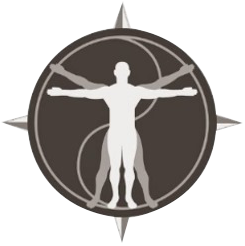Osteoporosis – Causes, Symptoms, and Treatments

Osteoporosis is a debilitating illness that affects millions of people worldwide. If left untreated, it can cause extreme pain, make daily activities difficult, and lead to major health consequences. This weblog will explain what osteoporosis is, as well as its causes, symptoms, and treatments.
What is Osteoporosis?
First and foremost, ‘Osteoporosis’ literally means “porous bone.” What exactly is it? It is a disorder in which the bones of the body become weak and brittle. When the body’s bones grow weak, the chance of fractures increases significantly. Hip, rib, and spine fractures are the most frequent.
Furthermore, you might be aware that bone is a living tissue. Because it is a living tissue, it continuously breaks down and replaces itself. If somehow, the new bones are not formed quickly enough to replace the old bones it results in osteoporosis.
Osteoporosis is most common among the elderly, although it may affect anybody at any age.
Osteoporosis is classified into two types: primary and secondary.
Primary osteoporosis develops when the bones gradually deteriorate with age.
Secondary osteoporosis is caused by factors such as drugs, nutritional deficits, or other medical disorders.
What are the Causes of Osteoporosis?
Osteoporosis can be caused by a variety of factors, including age, gender, food, and lifestyle selections.
A deficiency of vitamin D is one of the major risk factors for osteoporosis. Vitamin D aids the body’s absorption of calcium, which is required for strong bones. Without adequate vitamin D, bones can become thin and easily fractured.
Other risk factors for osteoporosis include:
Estrogen deficiency in the body – If a woman reaches menopause at an early age, she is more prone to develop osteoporosis. Furthermore, if she has had a hysterectomy in which one or both ovaries were removed, she will suffer osteoporosis.
Your gender, being female – Women are much more prone than males to acquire osteoporosis.
Having a family history of the condition – Osteoporosis does run in families since there are genetic factors that impact bone formation.
Taking specific medications
Drinking excessively – Having more than two drinks in a single day will increase the risk of osteoporosis.
Tobacco use – Cigarette smoking raises the risk of fractures.
What are the Symptoms of Osteoporosis?
Osteoporosis sometimes has no symptoms. The first indication that you may have it is if you break a bone in a small fall or accident.
Furthermore, osteoporosis symptoms vary from person to person.
They may include:
-
Bone pain or tenderness
-
Stooped posture
-
Fractures that occur with minimal trauma, such as a fall from standing height or less
-
Height loss
-
Increased risk of Kyphosis, which is a deformity of the spine that causes it to curve forward
Osteoporosis is commonly referred to as a “silent” disease because there are no signs until a bone is shattered. That is why it is critical to consult your doctor about your risk factors for osteoporosis and to get tested if you are concerned you may have the condition.
How is Osteoporosis Diagnosed?
Early diagnosis and treatment of osteoporosis are critical for avoiding bone fractures.
A bone density test is the most common approach to diagnosing osteoporosis. X-rays are used in this examination to determine the thickness of your bones. Before a fracture occurs, a bone density test can be performed to diagnose osteoporosis.
A DEXA scan is another method for detecting osteoporosis. This scan measures the density of your bones using low-dose X-rays. A DEXA scan is more reliable than a bone density test in detecting osteoporosis before a fracture occurs. You may have a fracture if you have osteoporosis. If you have a fracture, an MRI or CT scan may be required to diagnose the fracture.
How is Osteoporosis Treated?
Although there is no cure for osteoporosis, there are treatments that can help prevent bone loss and lower the risk of fractures.
Bisphosphonate therapy is a popular treatment. Bisphosphonate osteoporosis treatments are antiresorptive medicines. They prevent the body from reabsorbing bone tissue and hence increase bone density.
Additionally, doctors may advise patients to make lifestyle adjustments as
Increasing calcium consumption – To keep strong, healthy bones throughout your life, you must consume a calcium-rich diet.
Exercising on a regular basis – Exercise can help to strengthen your bones and muscles, lowering your chance of falling.
Quitting smoking
Osteoporosis can be treated with the right treatment, reducing the negative effects it has on your life.
Can Osteoporosis be Prevented?
Several measures can be taken to help prevent osteoporosis. Regular exercise, a healthy diet rich in calcium-rich foods, and quitting smoking, for example, can all help to lower the chance of having the illness. While there is no sure method to avoid osteoporosis, taking these precautions can help to reduce the chances of acquiring the condition.
Recap
Osteoporosis is a disease that causes bones to weaken and fracture. Even minor trauma might result in fractures. Because there are usually no signs until a bone is broken, osteoporosis is sometimes referred to as a “silent” illness. Early detection and treatment of osteoporosis are critical for avoiding bone fractures. Although there is no cure for osteoporosis, there are treatments that can help prevent bone loss and lower the risk of fractures. It is possible to control osteoporosis and reduce its influence on your life with proper treatment.

